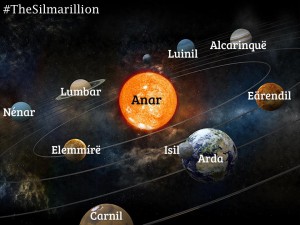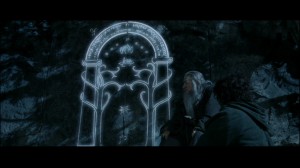
In this fantastic essay, first presented at the RingCon Tolkien convention in November 2002, Dr. Kristine Larsen, Professor of Physics and Astronomy at Central Connecticut State University discusses the evolution of Tolkien’s star lore, and its links with our own stars and constellations. It’s a long read, but quite worthwhile.
The astronomy of Middle-earth
One question we might ask ourselves when embarking on a critical study of Tolkien’s work is “are we just reading too much into a story?” Christopher Tolkien argued for the authenticity of such analysis: “Such inquiries are in no way illegitimate in principle; they arise from an acceptance of the imagined world as an object of contemplation or study valid as many other objects of contemplation or study in the all too unimaginary world.”
What we are doing is no less than the good professor did to himself. Tolkien wrote in a 1957 letter, “Naturally the stories come first. But it is, I suppose, some test of the consistency of a mythology as such if it is capable of some sort of rational or rationalized explanation.”
Tolkien was ever mindful of the inner consistency of his universe, and that it was not utterly exempt from the rules of the mundane world in which we live. In fact, Tolkien stated emphatically that Middle-earth is envisioned as our world, in a time far before all recorded history: In a letter to Rhona Beare in 1958 he wrote, “I have, I suppose, constructed an imaginary time, but kept my feet on my own mother-earth for place.”
In an earlier letter to his publishing company, he explained, “Middle-earth, by the way, is not a name of a never-never land without relation to the world we live in…. It is just a use of Middle-English middle-erde (or erthe), altered from Old English Middangeard: the name for the inhabited lands of Men ‘between the seas’. And though I have not attempted to relate the shape of the mountains and land-masses to what geologists may say or surmise about the nearer past, imaginatively this ‘history’ is supposed to take place in a period of the actual Old World of this planet.”

One gets an immediate appreciation of just how deeply astronomical ideas are ingrained in the texture and fabric of Middle-earth from a study of the chronology of events in “The Lord of the Rings.” Christopher Tolkien’s edited volumes of the “first drafts” of this classic tale (published as volumes in The History of Middle-earth) are bursting with references to the moon and its phases. It appears that much, if not all, of the internal chronology of Frodo’s journey across Middle-earth was timed by and to the phases of the moon.


